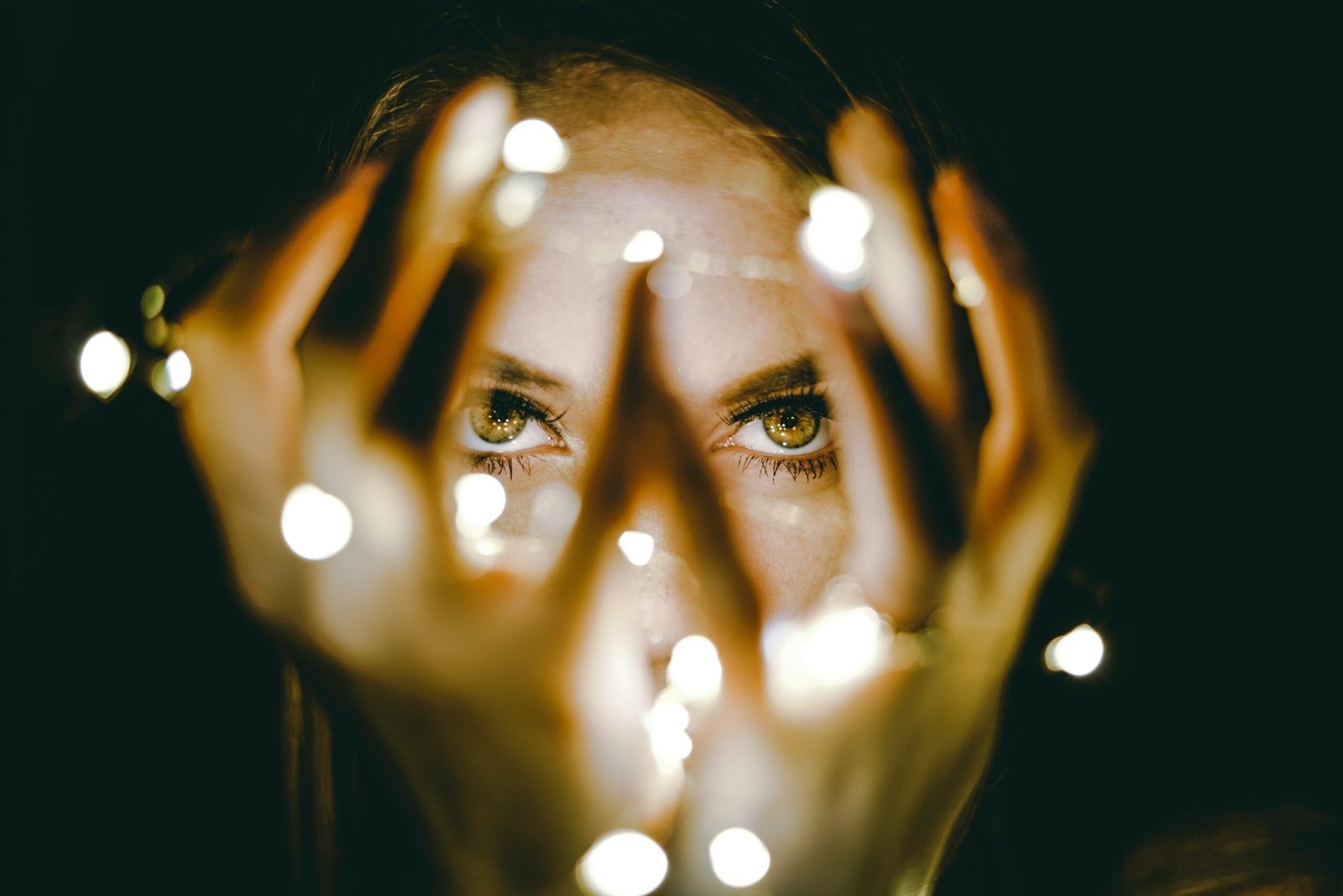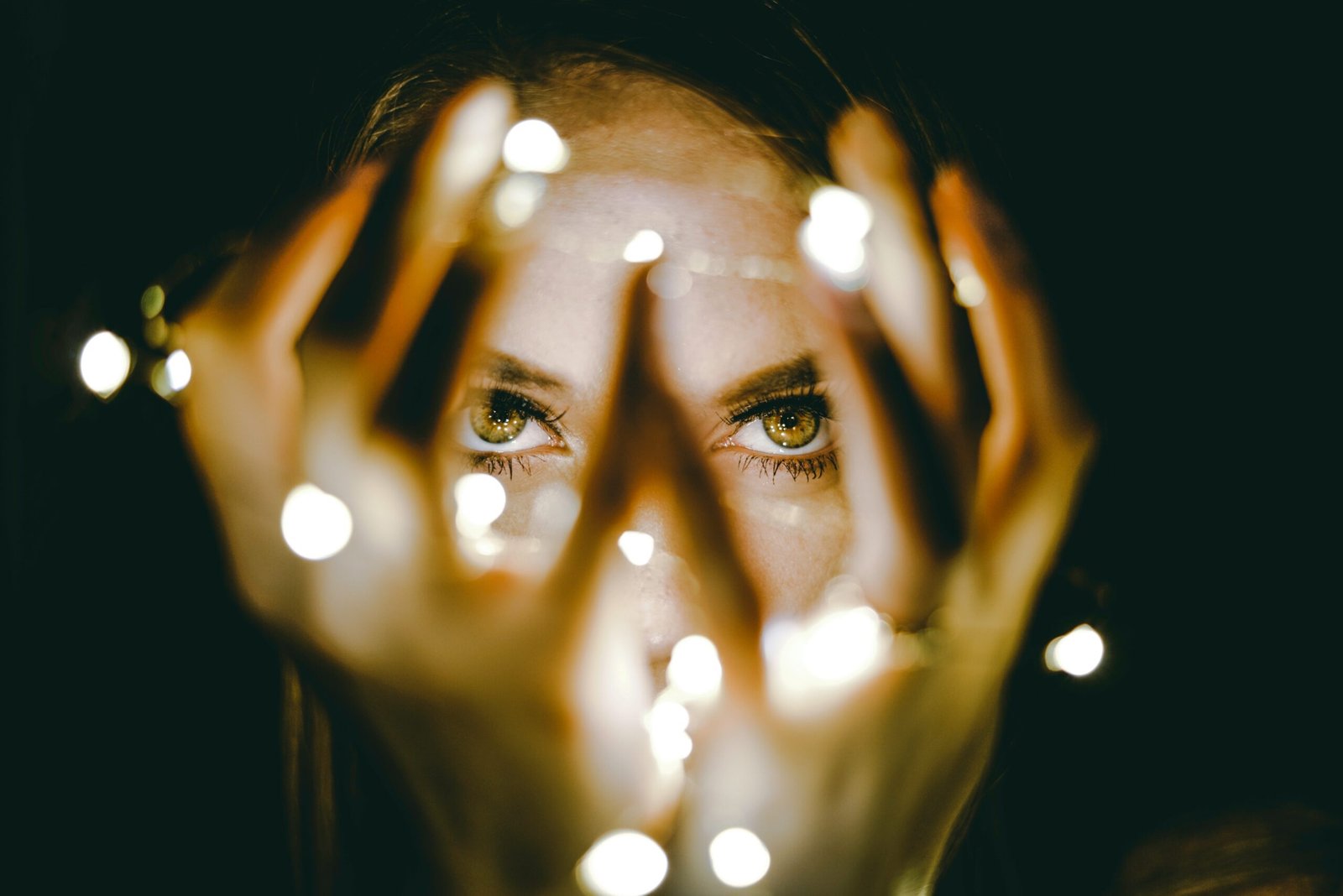
Introduction to Dark Circles
Dark circles under the eyes are a common cosmetic concern for many individuals. Characterized by a noticeable darkening of the skin around the eyes, these circles can develop due to a variety of factors. They often manifest as bluish, purple, or brownish discolorations, depending on one’s skin tone and underlying causes. While dark circles themselves are not usually a medical issue, they can significantly affect a person’s appearance and self-esteem.
The skin around the eyes is particularly delicate and thin, making it more susceptible to changes in color and texture. Commonly, dark circles are attributed to factors such as fatigue, aging, genetics, and lifestyle choices. Lack of sleep can lead to paleness of the skin, allowing the blood vessels underneath to become more visible, thereby creating a darkened appearance. Aging naturally thins the skin and reduces collagen production, which can exacerbate the visibility of blood vessels and dark pigmentation.
Genetics also play a crucial role; individuals with a family history of dark circles are more likely to experience them. Additionally, lifestyle habits such as poor diet, dehydration, excessive alcohol consumption, and smoking can contribute to the development and intensification of dark circles. Allergies and nasal congestion are other potential causes, as they can lead to inflammation and swelling, creating shadows under the eyes.
Understanding the multifaceted causes of dark circles is essential for addressing them effectively. For many, dark circles can impact self-confidence and contribute to a tired or aged appearance, which is why finding effective management and treatment options is a priority. This blog post will delve deeper into the underlying causes, prevention strategies, and available treatments to help individuals manage and reduce dark circles under their eyes.
Common Causes of Dark Circles
Dark circles under the eyes are a common concern for many individuals and can result from a variety of factors. One of the primary contributors is genetics. If your parents or grandparents have dark circles, there is a higher likelihood that you might develop them too. This hereditary predisposition is often due to the inherited traits of thinner skin or higher concentrations of melanin around the eyes.
Aging is another significant cause of dark circles. As we age, the skin naturally thins and loses collagen and elasticity, making the blood vessels beneath more visible. This transparency can give the area under the eyes a darker appearance. The natural loss of fat and structural support in the face also contributes to this phenomenon.
Lifestyle choices play a crucial role in the development of dark circles. Lack of sleep is perhaps the most well-known factor, as insufficient rest can cause the skin to become pale, highlighting the blood vessels underneath. Poor diet, particularly one lacking essential nutrients and hydration, can exacerbate the issue. Excessive consumption of alcohol and caffeine can lead to dehydration, which further accentuates dark circles.
Health conditions can also contribute to the appearance of dark circles. Allergies, for example, can cause itching and rubbing of the eyes, leading to inflammation and darkening of the skin. Conditions like eczema and dermatitis can have similar effects. Moreover, poor circulation and underlying medical conditions such as anemia can result in the pooling of blood under the eyes, giving them a darker hue.
Understanding the science behind these causes helps in addressing and managing dark circles effectively. By recognizing the factors that contribute to their formation, individuals can take proactive steps to mitigate their impact, whether through lifestyle adjustments, skincare routines, or seeking medical advice.
Identifying Different Types of Dark Circles
Dark circles under the eyes can manifest in various forms, each with distinct characteristics and underlying causes. Identifying the type of dark circles you have is crucial for effective management and treatment. There are primarily three types of dark circles: those caused by pigmentation, shadows from puffy eyes, and thin skin revealing blood vessels.
Dark circles caused by pigmentation are often the result of an overproduction of melanin. This type is more common in individuals with darker skin tones and can appear as brown or black discoloration under the eyes. Pigmentation-related dark circles can be exacerbated by sun exposure, genetics, and even certain lifestyle factors like lack of sleep and stress. These circles are generally uniform in color and do not change with facial expressions or lighting.
Shadows from puffy eyes, on the other hand, are caused by the protrusion of fat pads or swelling in the under-eye area. This type of dark circle often appears as a shadow or darker area beneath the puffiness and can vary in intensity throughout the day. Factors such as fluid retention, allergies, and aging can contribute to this form of dark circles. Unlike pigmentation dark circles, these shadows can change with the angle of light and can be more pronounced in the morning or after consuming salty foods.
The third type involves thin skin revealing the underlying blood vessels, giving a bluish or purplish tint to the under-eye area. This is more common in individuals with fair skin or those who have naturally thinner skin around the eyes. As the skin thins with age, the visibility of blood vessels increases, making these dark circles more prominent. This type can also be influenced by factors such as fatigue, poor circulation, and dehydration.
Distinguishing between these types of dark circles involves a careful examination of their appearance and behavior. Pigmentation-related circles are consistent in color, shadows from puffiness fluctuate with changes in lighting and facial expressions, and those caused by thin skin display a bluish or purplish hue. Identifying the specific type of dark circles you have will aid in selecting the most appropriate treatment and management strategies.
Preventative Measures for Dark Circles
Dark circles under the eyes can be a common concern for many individuals, often signaling underlying issues such as lack of sleep, poor diet, or exposure to environmental stressors. Taking proactive steps to prevent the development of dark circles can yield significant long-term benefits for your overall appearance and skin health. Below are several practical tips and lifestyle changes that can help mitigate this issue.
Sleep Hygiene
One of the most critical factors in preventing dark circles is maintaining good sleep hygiene. Aim for 7-9 hours of quality sleep each night. Establish a regular sleep schedule by going to bed and waking up at the same time every day, even on weekends. Creating a relaxing bedtime routine, such as reading a book or taking a warm bath, can also help improve sleep quality.
Dietary Adjustments
Your diet plays a significant role in the health of your skin. Consuming a balanced diet rich in vitamins and minerals can help prevent dark circles. Incorporate foods high in iron, such as spinach and lentils, and those rich in Vitamin K, like broccoli and kale, to support healthy blood circulation. Additionally, reducing salt intake can prevent fluid retention, which can exacerbate puffiness and dark circles.
Hydration
Staying hydrated is essential for maintaining healthy skin. Dehydration can make the skin under your eyes look dull and sunken, accentuating the appearance of dark circles. Aim to drink at least eight glasses of water a day. Including hydrating foods like cucumbers and watermelon in your diet can also be beneficial.
Sun Protection
Protecting your skin from the sun is crucial in preventing dark circles. UV exposure can cause pigmentation changes and accelerate skin aging, leading to dark circles. Always apply a broad-spectrum sunscreen with at least SPF 30, even on cloudy days. Wearing sunglasses and a wide-brimmed hat can provide additional protection.
By integrating these preventative measures into your daily routine, you can significantly reduce the likelihood of developing dark circles. These lifestyle changes not only improve the appearance of your under-eye area but also contribute to your overall health and well-being.
Home Remedies and Natural Treatments
Dark circles under the eyes are a common concern, often leading individuals to seek effective remedies. Fortunately, several home remedies and natural treatments can help reduce their appearance. These solutions are not only cost-effective but also free from the harsh chemicals found in many commercial products.
One of the most popular remedies is the use of cucumber slices. Cucumbers are rich in antioxidants and have a high water content, which helps to hydrate the skin. By placing cool cucumber slices over the eyes for about 10-15 minutes, the cooling effect can reduce puffiness and lighten dark circles. The antioxidants in cucumbers also help in reducing inflammation and soothing the skin.
Another effective remedy is the application of tea bags. Both green and black tea bags contain caffeine and antioxidants, which can improve blood circulation and shrink blood vessels. After soaking the tea bags in hot water and letting them cool in the refrigerator, placing them over the eyes for 15-20 minutes can significantly reduce the appearance of dark circles and puffiness.
Aloe vera is also widely recognized for its soothing and moisturizing properties. Applying fresh aloe vera gel under the eyes can help in hydrating the skin and reducing pigmentation. The vitamins and enzymes present in aloe vera can promote healthier skin and alleviate the darkness around the eyes.
Essential oils, such as almond oil and rosehip oil, are beneficial due to their nourishing and skin-lightening properties. Almond oil is rich in vitamin E and antioxidants, which help to rejuvenate the skin and reduce dark circles. Gently massaging a few drops of almond oil around the eyes before bedtime can yield noticeable results over time. Similarly, rosehip oil, known for its regenerative properties, can help in reducing pigmentation and improving skin texture when applied regularly.
Incorporating these natural treatments into your skincare routine can help in managing dark circles effectively. While results may vary from person to person, consistent use of these remedies can lead to noticeable improvements without the need for expensive treatments.
Over-the-Counter and Prescription Solutions
Dark circles under the eyes are a common cosmetic concern, prompting many individuals to seek out effective treatments. Over-the-counter (OTC) products and prescription solutions offer a range of options tailored to address this issue. These products typically come in the form of creams, serums, and treatments which contain potent ingredients aimed at reducing the appearance of dark circles.
Vitamin C is a popular ingredient found in many OTC eye creams and serums. Known for its antioxidant properties, Vitamin C helps to brighten the skin and reduce hyperpigmentation. Regular application can result in a more even skin tone and improved elasticity, making the under-eye area look fresher and rejuvenated. However, users should be cautious as high concentrations of Vitamin C can sometimes cause skin irritation.
Retinol, a derivative of Vitamin A, is another frequently used ingredient in products targeting dark circles. Retinol works by promoting cell turnover and collagen production, which can thicken the skin and reduce the visibility of blood vessels under the eyes. While effective, retinol can also lead to dryness and increased sensitivity to sunlight, necessitating the use of sunscreen during the day.
Hyaluronic acid is celebrated for its hydrating properties. It helps to plump the skin by retaining moisture, which can diminish the hollow appearance that exacerbates dark circles. Hyaluronic acid is generally well-tolerated and suitable for most skin types, with minimal risk of side effects.
Caffeine is frequently included in eye creams due to its vasoconstrictive properties. It reduces blood flow in the under-eye area, which can decrease the darkness caused by dilated blood vessels. Products containing caffeine can offer a quick fix but are often best used in conjunction with other treatments for long-term results.
Prescription treatments, such as hydroquinone and kojic acid, are also available for those with more persistent dark circles. These ingredients work by inhibiting melanin production, thus addressing pigmentation issues. However, they should be used under the guidance of a dermatologist due to potential side effects like skin irritation and increased sensitivity.
In summary, both over-the-counter and prescription solutions offer a variety of options for managing dark circles under the eyes. By understanding the function and potential side effects of key ingredients such as Vitamin C, retinol, hyaluronic acid, and caffeine, individuals can make informed decisions about the best treatment for their needs.
Professional Treatments and Procedures
When home remedies and over-the-counter treatments fall short, professional interventions can offer more effective solutions for dark circles under your eyes. Among the most popular treatments are chemical peels, laser therapy, fillers, and microneedling. Each procedure comes with its own methodology, expected outcomes, recovery periods, and potential risks.
Chemical Peels
Chemical peels involve applying a chemical solution to exfoliate the skin, which helps to rejuvenate and even out pigmentation. This treatment can significantly reduce the appearance of dark circles by removing the top layers of skin, revealing fresher, more evenly toned skin beneath. Recovery time is generally brief, ranging from a few days to a week, depending on the peel’s strength. However, risks include redness, irritation, and, in rare cases, scarring or infection.
Laser Therapy
Laser therapy targets the pigment in dark circles using focused light energy. The procedure stimulates collagen production, which helps to thicken the skin and reduce visible blood vessels under the eyes. Results are often noticeable after a few sessions, with minimal downtime required. Potential side effects include temporary redness, swelling, and, in rare instances, changes in skin pigmentation.
Fillers
Dermal fillers, commonly composed of hyaluronic acid, are injected into the under-eye area to plump and smooth out hollow regions that can accentuate dark circles. This treatment delivers immediate results, with effects lasting anywhere from six months to a year. Recovery is typically swift, though some patients may experience mild swelling or bruising at the injection site.
Microneedling
Microneedling involves the use of fine needles to create micro-injuries in the skin, promoting collagen and elastin production. This technique can improve skin texture and diminish the appearance of dark circles over multiple sessions. The recovery time is relatively short, usually a few days, with potential risks including redness, swelling, and minor discomfort.
Each of these professional treatments offers a viable solution for managing dark circles, but it is essential to consult with a qualified dermatologist to determine the most suitable option based on your individual needs and skin type.
Lifestyle Changes for Long-Term Improvement
Maintaining a healthy lifestyle is paramount for the long-term improvement of dark circles under the eyes. A balanced diet, rich in vitamins and minerals, plays a crucial role in skin health. Incorporating foods high in antioxidants, such as fruits and vegetables, can help combat oxidative stress, which contributes to the appearance of dark circles. Additionally, staying hydrated is essential; water helps to flush out toxins and keep the skin looking fresh and healthy.
Regular exercise is another critical component. Physical activity boosts circulation, ensuring that nutrients are efficiently delivered to the skin and waste products are removed. Exercise also helps in reducing stress levels, which can contribute to a better night’s sleep. Adequate sleep is vital for skin regeneration and repair. Adults are generally recommended to get 7-9 hours of quality sleep per night. Establishing a consistent sleep routine and creating a restful environment can significantly improve sleep quality and, consequently, reduce dark circles.
Stress management is equally important. Chronic stress can lead to various health issues, including poor skin health. Practices such as mindfulness, meditation, and yoga can help manage stress effectively. Incorporating these practices into daily life can have a profound impact on overall well-being and skin condition.
Implementing these lifestyle changes might seem challenging, but small, incremental adjustments can make a significant difference. Start by incorporating more fruits and vegetables into your diet, setting aside time for regular physical activity, and prioritizing sleep. Mindfulness and relaxation techniques can also be woven into your daily routine. These changes not only help in reducing dark circles but also contribute to overall skin health and general well-being.


